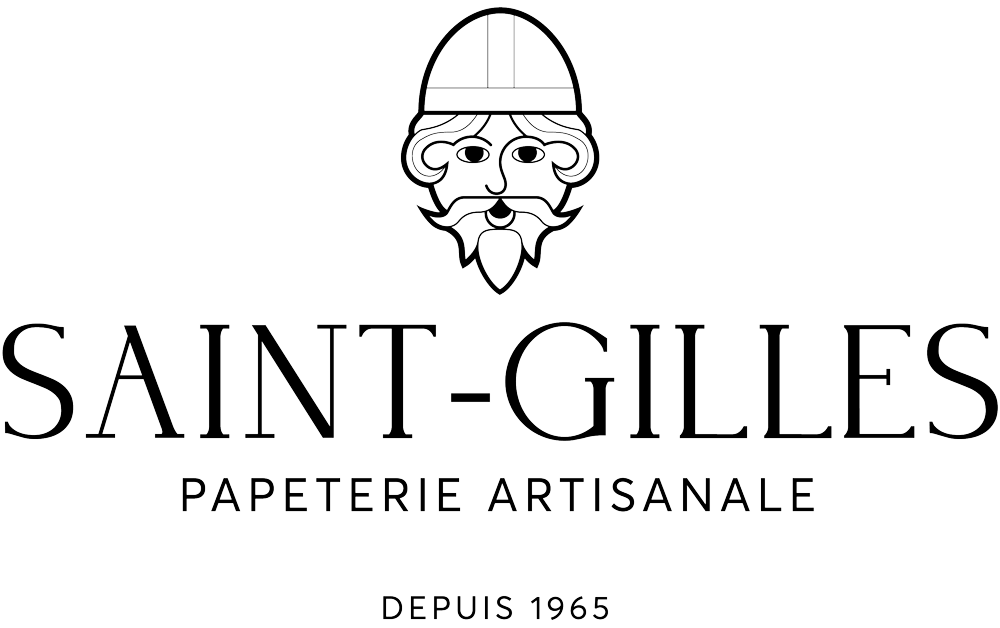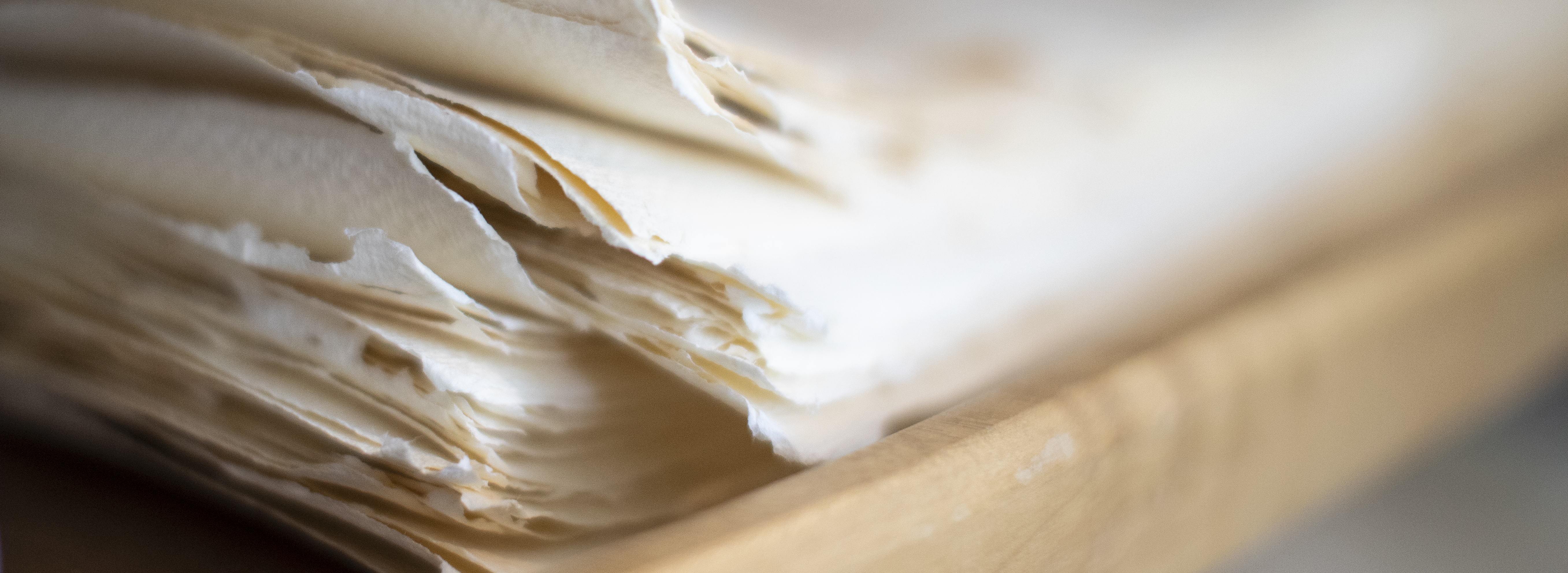Six steps for producing handmade paper:

1. Shredding
The first step is the preparation of the pulp. First, cotton linters are coarsely shredded by hand and then transferred to the defibration Hollander pile; the pile acts as a big mixer and in a little while, our paper pulp is ready. We then add a small amount of glue to offset the blotter effect.
2. Steeping and screening
Then we pour the paper pulp in a beater tub. To make a paper sheet, we need a deckle and a frame: the frame is a screen made up of brass wire attached to wooden rods. The deckle is a mobile cover that fits on the frame and is used to set the sheet format. The paper maker dips this in the beater tub and brings it up full of paper pulp, shaking it in back and forth to let the water drain.
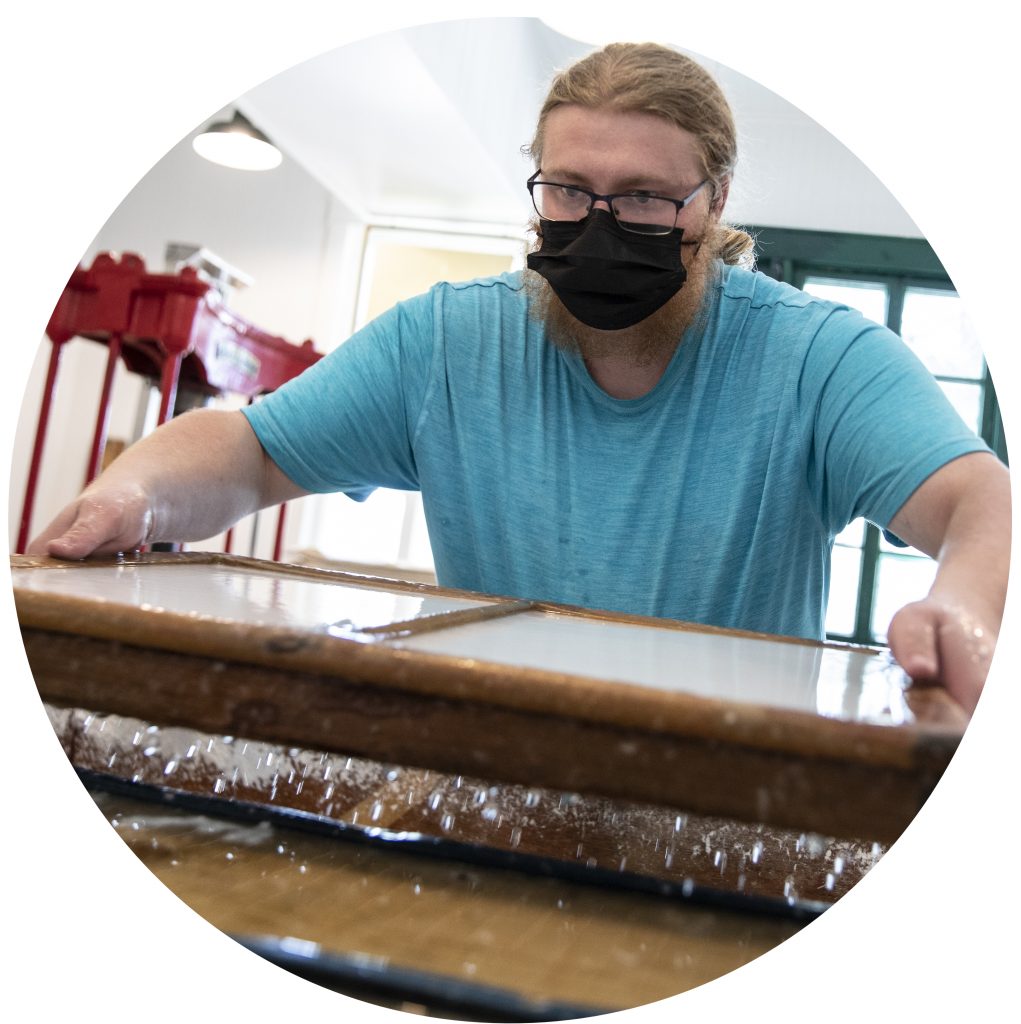
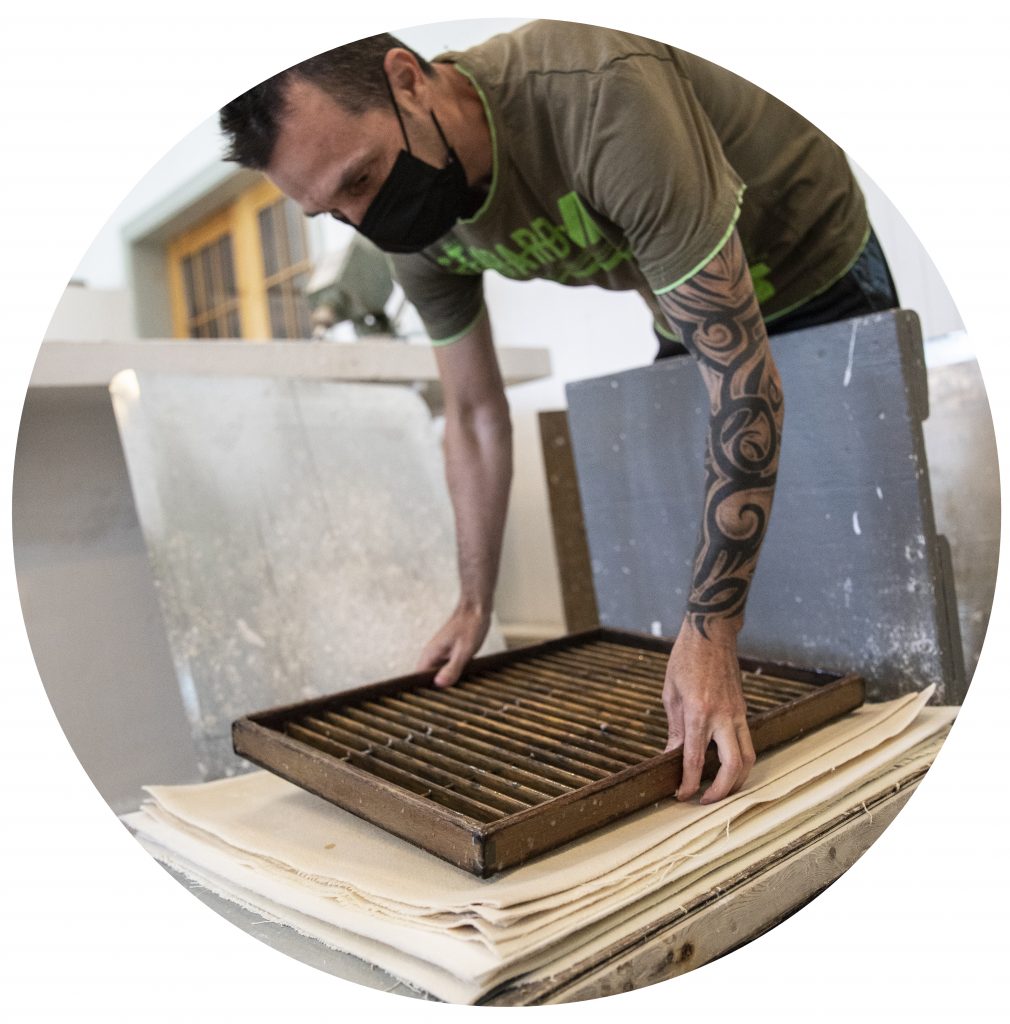
3. Coating the sheet
Once the sheet has settled on the surface of the screen, it must be taken off its support. The removal of the sheet consists in turning over the screen on a surface of wool felt to remove it from its support. The water-logged sheets are then spread out between felts. We end up with a pile of 100 sheets called a pack.
4. Pressing
The sheets interleaved in the felts are pressurised to eliminate as much water as possible. We use a hydraulic press generating about 30 tons.
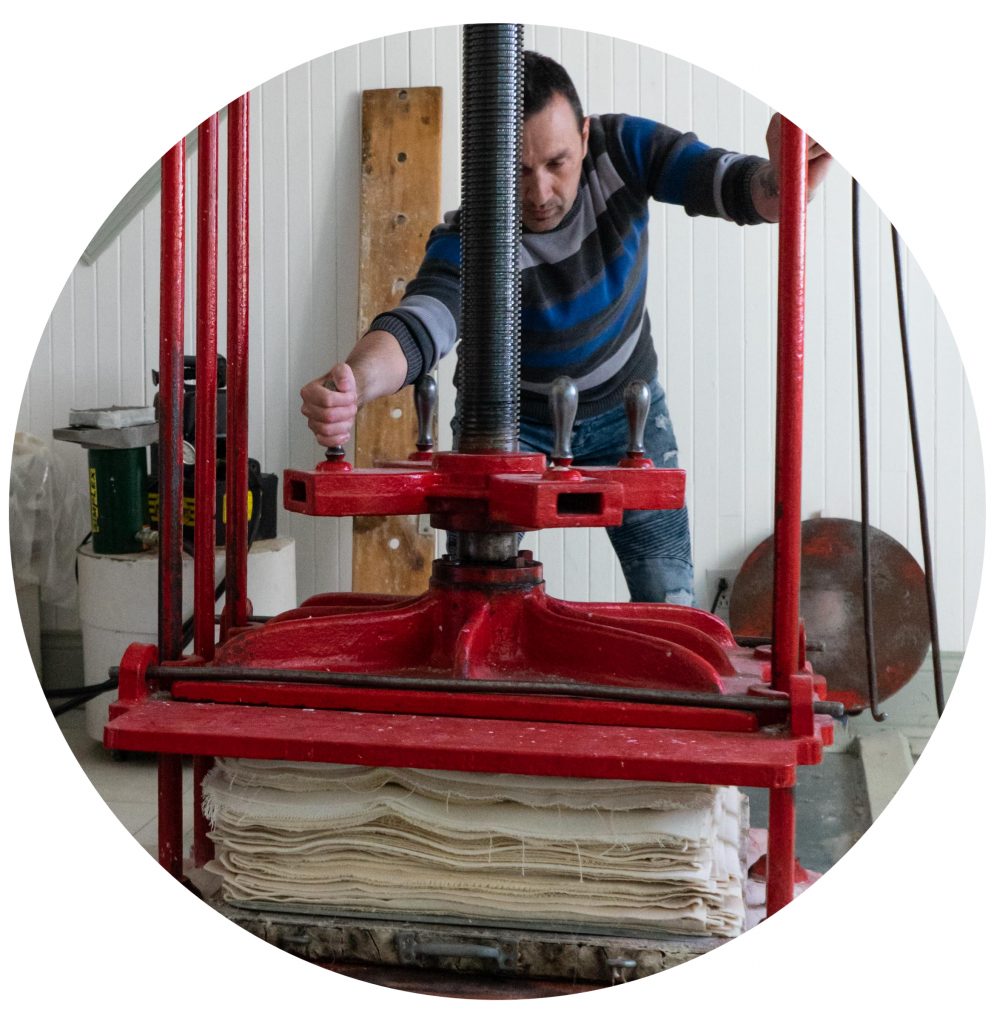

5. Drying
The damp sheets are taken to the drying room and spread out one by one on a dryer. Drying takes about 24 hours in a room where humidity is controlled.
6. Calendering
The last step consists of smoothing out the sheets because during the drying period, sheets retract and warp. To obtain a smooth effect, we put the sheets in a calender to be levelled evenly by two huge steel drums. Then, the paper sheets are ready for use. We save a number of sheets that have not gone through this process for those who prefer a textured paper sheet.

The sole product of Papeterie Saint-Gilles is a cotton-based handmade paper. No trees are felled and no bleaching agent is used at production time. To the cotton pulp, we had water and glue to waterproof the paper so that it can be used for writing or watercolouring, for example.
We receive our raw material in the form of sheets culled by the textile industry for the purpose of recuperatio. These are called cotton linters. In fact, we work with cotton fibers that are too short to be woven but lend themselves easily to paper production due to their large quantity of cellulose. Cellulose is characterised notably by its hydrophilic capacity which gives a strong absorption capacity, so useful in the paper making industry to ensure a bond between fibers.
Why is cotton-based paper more durable?
its composition, we produce a superior quality paper characterised by an absence of lignin, Lignin is one of the main ingredients of wood; this photosensitive molecule produces a yellowing effect when paper is exposed to light. This yellowing effect is not desirable in a quality paper. Several processes are used to separate lignin from cellulose. We avoid this by using cotton fibers. > How do we create a durable product?Saint-Gilles paper is special in more ways then one. At the mixing stage, we add flower petals harvested locally to the pulp. At the screening stage, we can spread the sheet on a lace curtain which is imprinted on it while being pressed. This gives a texture which alters the appearance of the paper sheet. Sheets are made by hand, one by one, and have a fringe all around. The Saint-Gilles watermark is inlayed in each sheet making it a unique and original product.
White pur fil, Charlevoix, fleur bleue, summer song, old parchment purple salicaire, hawkweed and flower garden: these are the names of our papers according the presence or absence of various components and/or natural colouring agent.
We produce sheets for writing and drawing of 200 G.S.M.2 (white or parchment) and a thicker artist paper (white only) of 450 G.S.M.2 for creative projects.
Saint-Gilles papers can be used for personal correspondence, drawing, water colouring, creating various objects. We also print serigraphic or digital works, Usage is limited as far as your imagination goes.
To purchase papers and other objets d’art, visit our boutique !

